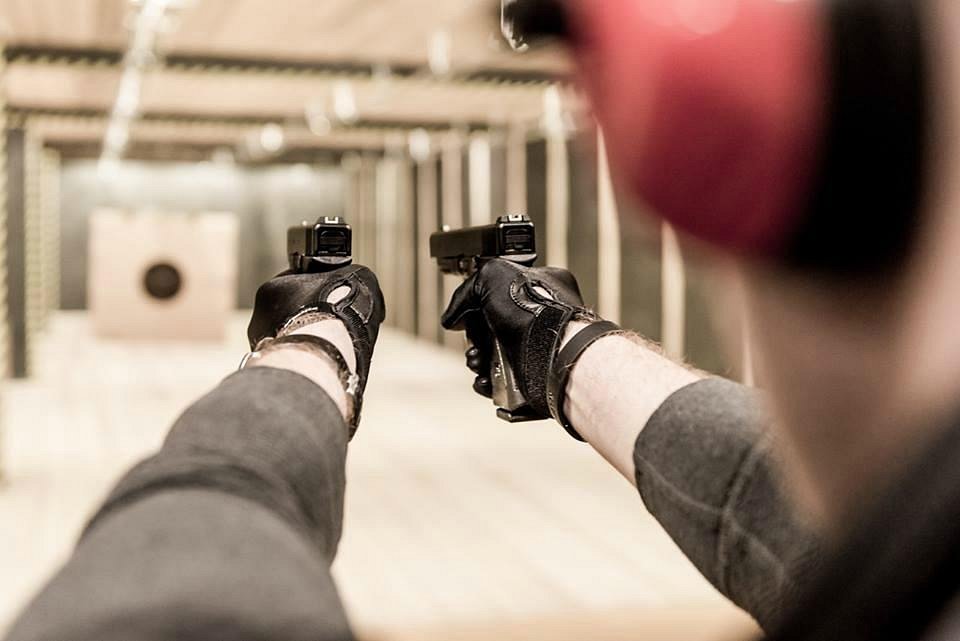Budapest has a lot to offer travelers, from soaking in muscle-melting thermal baths to admiring the neo-Gothic Parliament building. It’s easy to fill a day or two here!
Soak up the local atmosphere on a dinner cruise on The Danube. You’ll see Buda Castle, Fisherman’s Bastion and more at night!
1. Gellert Hill
Whether you’re looking for a scenic place to watch the sunset or you simply want to experience one of Budapest’s best walks, Gellert Hill is an incredible spot to visit. You can hike the pathway or take a short tram ride to the top, and you’ll be rewarded with views that overlook both sides of the city.
Along the way, you’ll walk under the spires of the Parliament Building and pass by a memorial to Jewish citizens who were killed during World War II. You’ll also see a stunning garden called the Philosophers’ Garden, which is adorned with statues of some of history’s greatest thinkers.
Then, you can explore the House of Terror—which is no typical haunted house or theme park attraction but instead a museum that tells the harrowing story of Hungary’s fascist and communist dictatorships. Afterwards, stroll along Bartok Bela Boulevard to experience the Buda side of Budapest life. This revitalized area is teeming with bars and cafes inhabited by fashionable Millennials and engineering students.
2. Gundel Restaurant
Roam the streets of Budapest’s castle district: The medieval Old Town on the Buda side is usually swarming with tourists, but come up here before sunset and you’ll have famous landmarks like Fisherman’s Bastion and Matthias Church, as well as the winding historic streets, to yourself. Then, wander through the city park, which has reinvented itself in recent years with eye-catching new museums and the Millennium haza (snow globe).
Climb to the top of the Buda hills: The half-hour cardio workout required to climb to the Liberty Statue on Gellert Hill is more than worth it for sweeping views over the capital. Then, walk around the Fiumei Road Cemetery, where you’ll find towering limestone mausoleums and elaborate tombstones honoring Hungary’s prominent statesmen and artists (and Communist heroes).
Visit a Ruin Bar: Budapest’s unique take on a pub or bar started in the 2000s as abandoned buildings were taken over and transformed into cool places to drink beer.
3. The Hungarian State Opera House
Despite its tumultuous history, the palace complex now exudes peace and grandeur. Book a guided tour to see the opulent interiors, including private balconies, the royal private staircase and a bar area lavishly clad in crystal and Croatian marble. You’ll also learn more about the opera house’s acoustics, which are renowned.
Budapest’s once-dreary Palace Quarter now brims with charming eateries and low-priced drinking joints. You can sample local cold cuts and pick up a bottle of the city’s signature herbal liqueur, Unicum, at Lehel Market inside a quirky postmodern building.
Art galleries are reviving after four decades of Communist-era censorship. The National Gallery is home to an impressive collection of Medieval, Renaissance, and Baroque Hungarian artworks. Other popular galleries exhibit contemporary art, including works by Karoly Ferenczy, who forged an impressionist art colony in Nagybanya; surrealist Tibor Vilt; and the proto-abstract artist Nyolcak.
4. The Jewish Cemetery
Explore the underground tunnels on a guided tour, which include an 800-year-old wine cellar. A must for history buffs, this is one of the more adventurous and less-trodden things to do in Budapest. However, it’s not recommended for those who are claustrophobic.
Visit the Jewish Cemetery, or Kerepesi ti cemetery: The largest cemetery in Budapest, this is a must-see for history buffs who want to learn about Hungary’s complicated relationship with its past. The crypt is home to graves of Jewish heroes and martyrs, as well as a grand oriental-style Tahara house. The cemetery is closed on Saturdays and certain Jewish holidays, but can be accessed by request any day of the week.
Enjoy a bottle of Hungarian wine: Hungary’s vineyards produce native grapes such as furmint, harslevelu, and kekfrankos/Blaufrankisch. You can find many local wine bars around the city, or try them at a restaurant like Mazel Tov.
5. The Great Market
The Great Market, also known as Nagyvasarcsarnok, is a huge 19th century-style mall filled with souvenir shops and food stalls that both locals and visitors love. If you’re a bargain hunter, this is the place to go, as prices are low here.
Wander down Andrassy Avenue, Budapest’s version of the Champs-Elysees or Ringstrasse, to admire the city’s eye-catching revival architecture. Look for the distinctive buildings designed by Odon Lechner, who pioneered Hungary’s distinct style of Art Nouveau.
Get a taste of the city’s unique nightlife at one of the cool and quirky ruin pubs. These are the spaces that were abandoned post-war and then transformed into cool bars with cheap drinks and a hodgepodge of flea-market furniture, such as Szimpla Kert, the city’s first ruin bar. Or try out a cozy kocsma, like Jopipa Sorozo, that’s frequented by students from the nearby Corvinus Economics University for beer and tabletop football.
6. Experience the Ruin Bars
Ruin bars are the latest rage in Budapest, where creative spaces quite literally hijack rundown warehouses, abandoned parking lots, and historic buildings in District 7 and turn them into lively hangouts. Expect a kitschy interior filled with mismatched vintage furniture, a DJ spinning tunes on the dancefloor, and cheap drinks.
Instant/Fogas Haz is more of a nightclub than a ruin bar, and it draws a young crowd (often bachelor party crews). This massive entertainment complex inside a skeletal 1861 building in the Jewish Quarter has multiple bars and a few dance floors. Drinks are on the pricey side, but if you don’t mind shelling out for an experience, this is definitely worth a visit.
While these bars may help revitalize the Jewish Quarter, they are far from a true local experience. Instead, expect to find yourself drinking with a sea of tourists with selfie sticks and go pro cameras on walking tours.



